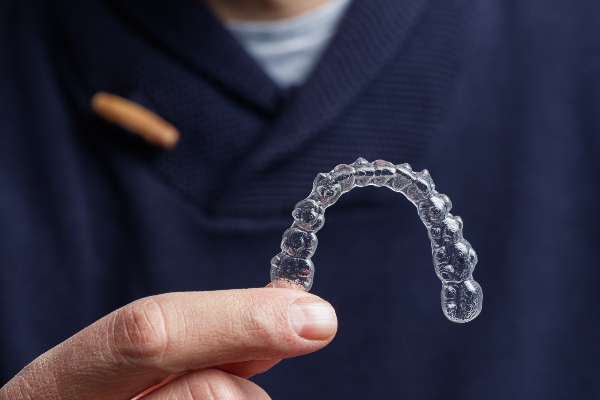How Are Dental Veneers Made?

As more patients seek cosmetic dental treatment, dental veneers are more popular than ever. These restorations can completely transform a patient's smile. A porcelain or composite veneer can change a tooth's size, shape, or color. It can also be used to repair mild to moderate damage in some situations. This can help protect a person's teeth while also improving their confidence in their smile.
Patients interested in this treatment may wonder how the process works. It often requires multiple visits with a dentist from start to finish. Consider these three stages of dental veneer treatment to better understand what to expect with this type of procedure.
Understanding the dental veneer process
Before beginning the dental veneer process, patients need to understand the procedure. This way, they can make informed decisions about dental care. The patient must know that the dentist must remove some tooth structure to attach a veneer. Patients should also consider that once a dentist prepares a tooth for this restoration, the tooth will always require a veneer or crown to cover it. Before moving forward with treatment, the patient should understand what happens at each appointment for dental veneers.
Preparation appointment
At the initial appointment for dental veneers, a dentist prepares the tooth. This preparation involves reducing the front of the tooth by a few millimeters. This preparation ensures the veneer has enough surface area to attach. Unlike a dental crown, a veneer only requires shaving down the front surface of a tooth.
If the patient is receiving composite (chairside) veneers, the dentist will fabricate them that day. Because this is a same-day procedure, the patient needs no further appointments unless adjustments are needed. These restorations are very natural-looking but may not last as long as porcelain ones. In some cases, though, composite veneers do not require as much removal of the tooth surface as porcelain restorations.
If a dental laboratory will make the patient's porcelain veneers, the dentist creates temporary restorations. This way, the patient's smile looks natural while waiting for the final product. Patients should always discuss with the dentist the advantages and disadvantages of both types of veneers.
Laboratory time
Dentists often send porcelain veneers to a dental laboratory for fabrication. After the dentist prepares the teeth, they take impressions. These impressions may be physical molds or digital scans. The dentist sends these to a dental laboratory, and technicians use the impressions to create models of the patient's teeth. This way, the technician can design custom-fitting, natural-looking veneers. The dentist sends a shade preference and any other details to the lab. This way, veneers are made to the patient's specifications.
Delivery appointment
Turnaround time for dental laboratories can vary, but most patients can expect to receive the permanent veneers in a few weeks. The dental office schedules an appointment when the restorations are ready. At this appointment, the dentist removes the temporary veneers and bonds the permanent ones. Then, the dentist makes necessary adjustments for the patient's comfort.
The benefits of choosing dental veneers
Veneers can be a versatile treatment option for a variety of dental issues, including:
- Staining or discoloration that will not respond to whitening treatments
- Minor to moderate chips or cracks
- Gaps between otherwise properly aligned teeth
- Adult teeth that are unevenly sized or shaped
Many people choose veneers because they offer beautiful and realistic results. Porcelain veneers are known for having light-reflecting properties that help them effectively mimic the appearance of natural teeth. In addition, dentists are able to match the ideal size, color, and shape so that your veneers can blend seamlessly with other teeth as needed.
With proper care and routine checkups, dental veneers can be quite durable. In many situations, they can last for 15 to 20 years before a replacement is needed. While the placement procedure can be uncomfortable, it is significantly less invasive than other tooth restoration options. It is important to remember that because a dentist must remove some tooth enamel to place veneers, the procedure is irreversible. Getting porcelain veneers is a lifelong commitment, but one that many patients are very happy with.
Conclusion
Patients interested in cosmetic dental treatments may find that dental veneers are the right choice. This option can effectively repair damage while improving the look and function of natural teeth. Those wanting a new smile should set up a consultation with a dentist today. This way, any patient can begin a journey toward a healthy, confident smile.
Request an appointment here: https://stonecanyondental.com or call Stone Canyon Dental at (972) 226-6655 for an appointment in our Sunnyvale office.
Check out what others are saying about our dental services on Yelp: Dental Veneers and Dental Laminates in Sunnyvale, TX.
Recent Posts
A dental veneer is a thin cap that fits over a damaged tooth. It creates the appearance of a new white tooth. Dental veneers are a popular option for repairing minor chips and damage. They can also make the teeth appear straight without resorting to orthodontics. Compared to surgery, fitting a dental veneer is a…
A severely chipped tooth needs a more robust solution like dental veneers. A severely chipped and cracked tooth is not just aesthetically unpleasant. It also makes the tooth more prone to cavities and infection. It exposes the tooth nerve, causing extreme sensitivity to cold, hot, sweet, and slightly acidic food.Dental veneers are often used to…
Patients who want to improve their smile may choose dental veneers. Veneers are coverings placed over the top of the tooth to mimic the appearance of natural teeth. Dentists may use veneers to address various problems, including stained teeth, crooked teeth, uneven spaces, or chipped teeth. When applying veneers, dentists may use porcelain or composite…
If you are considering having veneers attached to your teeth, you likely want some answers first. And who can blame you? After all, these are your teeth and you want to do everything possible to protect them. One question you might have is can veneers ruin the teeth?Before answering that question, people need to understand…







